| GENERAL |
-
GSTAR-EX1
Page
- Books
- Contact Us
- Buy GSTAR-EX
- GSTAR-EX3
|
|
GSTAR 4
CAPTURE |
|

GSTAR Capture V4
Our renowned video capture software
on CD with your camera.
Developed in Australia it also includes camera COM remote control for
use with GSTAR-PC COM cable along with a host of other features.
CLICK HERE FOR MORE

IC2220 by S.Quirk

M16 by S.Quirk

Jupiter - S.Massey

Lunar imaging - S.Massey
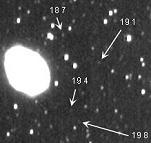
Stacking many images and image processing
reveals a 19.8 magnitude star near M57 with 12-inch telescope.
courtesy S.Quirk
VENUS
Utilising the GSTAR cameras near infrared sensitivity,
imaging the thermal radiation from the surface of the night side of
Venus seen here using a 1-micron filter and 12 -inch telescope.

|
|
Optional Accessoris |
|

Vixen C-mount 2.4X tele-extender
for increased magnification of the Moon, planets and planetary nebulae.
Screws directly into the camera and acts both as a barlow lens and
nosepiece in one.

Designed in Australia
specifically for the
GSTAR-EX range.
ProStar 0.7 to 0.5X
C-thread focal reducer to effectively produce a wider
field of view and brighter images. Screws directly into the camera and
acts both as a reducer lens and nosepiece in one.
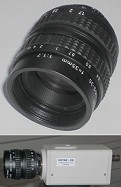
Use your GSTAR-EX2 camera as a highly
sensitive finder-scope with this excellent non-vignetting 35mm c-mount
lens. Do star alignment for your mount before you can even see the
stars!
Gives a 9.5 degree wide field of view.

M83 in Hydra with 12-inch Newtonian and
ProStar LRGB filter set.
The 1/2-inch CCD give dramatic close up views at the prime focus of this
telescope.
|
|
GSTAR-COM for PC |
|


This image of the Helix Nebula taken with LRGB filters using a
small affordable 130mm f/5 Newtonian telescope.
|
|
David Malin Award |
|

Darrin Nitschke receiving receives a
special mention award from Dr.David Malin for his GSTAR-EX panorama
image of Markarian's Chain of galaxies

This tiny planetary nebula Shapley
1 is seen easily
with the GSTAR-EX2 camera. |
|
Mercury |
|

Rare detail captured in
this image of Mercury
|
|
|

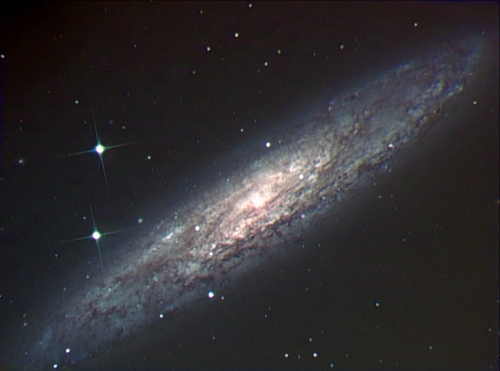
Above: NGC253 - 12-inch Sky-Watcher L(400) RGB (200)
THIS PRODUCT IS NOW DISCONTINUED
Amazing Live Views
Excellent Imaging Camera
X256 frame accumulation
Super Low Noise
Fast Accumulation ramp up time (<30s)
1/2" Sony monochrome micro-lens CCD
Click here to take a look at this
montage of deep-sky images
taken over a few hours using just a small
ED80 f/7.5 refractor

This LRGB image of the Trifid nebula was taken with a
small Vixen 130mm f/5 Newtonian. Using X256 frame
accumulation mode, just 150 stacked frames for each filter.
See article on Vixen R130Sf Newtonian with GSTAR-EX2
|
No
Fuss set-up and Easy to Use
View faint galaxies and nebula on your TV or
computer
View the planets and Moon with amazing detail
See more detail than views at the eyepiece
Perfect for Observatories, Schools, Uni,
family and friends
Record to VCR, DVD, Memory Stick or disk drive
Excellent black & white portraits
Colour imaging with optional LRGB filters
Fast image rates beat distorting effects of the atmosphere
Internal frame accumulation for seeing faint objects
BNC Composite out
RS232 PC COM control
OSD Menu System
2X Zoom plus Mirror and Flip functions
Image Enhance Function
Manual & Auto Shutter Speeds
Gain Control and Gamma Presets
>>TOP
|
|
THE GSTAR-EX2
VIDEO ASTRONOMY CCD CAMERA |
SIMPLE
AS 1. 2. 3.
Looking for a simple, no-fuss way to capture dramatic portraits of the night sky with a
telescope? Something that doesn't require absolutely perfect telescope tracking or polar
alignment and long exposure times?
Our GSTAR-EX series of cameras are the complete CCD
based video imaging tool
you've been seeking. Utilising a highly sensitive ExView HAD Sony CCD and leading-edge, on-board
frame accumulation and super noise reduction technology, this camera reveals
amazing real-time views of galaxies, nebula,
star clusters, comets, the planets and their moons and of course, our own Moon.
With suitable safety filtering, the Sun can also be imaged in
extraordinary detail.
This camera will show you far more detail than can be seen visually at the eyepiece. in near real-time. Simply place the camera in to
the focuser of your telescope like an eyepiece and connect it to your home TV monitor,
VCR, DVD recorder or PC.**
Take a look at this
montage of deep-sky images taken over a few hours using just a small
ED80 f/7.5 refractor. **
Set the
camera to "sense up" integration mode and watch those faint deep sky wonders unfold before your
eye's! You don't even need to travel to dark country skies to achieve excellent celestial
portraits.
>>TOP
|
| APPLICATIONS |
| Lunar Imaging -
Planetary Imaging - Deep Sky Imaging - Supernova Patrol - Comet Hunting - All Sky Camera -
Meteor & Asteroid Imaging - Occultation timing - Video Finderscope -
Auto-Guiding.
PUBLIC EDUCATION
The GSTAR-EX2 is the perfect tool for
educational nights in public observatories, schools, clubs and universities particularly
when people are having difficulty viewing objects through the eyepiece.
The camera is a completely stand-alone device and does not require a
computer to operate. It can be plugged straight into the AV
(composite video) input connector of a projector, TV monitor or DVD /
VCR recorder.
CAMERA TO
COMPUTER OPTIONS
Capturing the video output from the
GSTAR-EX2 to a desktop PC or Laptop can be achieved by using a video capture device such as
a PCI card in the case of a desktop machine or a video to USB adapter for a Laptop.
CALL US on (07)4194 5502 for advice and
technical support
>>TOP
|
|
GENERAL QUESTIONS |
| The GSTAR-EX2
is a highly affordable deep sky and planetary imaging camera that goes a
step deeper into the dark than the classic GSTAR-EX. Q. Do the GSTAR-EX2 camera
need a computer or software to work?
A. NO. The camera is a completely
stand-alone
analogue output device and can be plugged straight into the AV
(composite video) source input connector of a projector, TV monitor or
DVD / VCR recorder. These are usually a yellow colour coded female RCA
socket found next to the white and red coded audio left and right inputs.
Q. Does the GSTAR-EX2 camera have more hot pixels?
A. While the GSTAR-EX2 is not a
thermally cooled camera, its revolutionary super digital noise reduction
circuit presents an image free of obvious hot
pixels (sometimes referred to as false stars). This coupled with its
longer exposure times makes it perfect for live viewing and educational
purposes. Even those dark
contrast rings often seen around bright stars are greatly minimised.
Its signal to noise performance is superior to other cameras in the same frame
accumulation class.
Q. For imaging... do I
still need to take dark frames?
A. While the cameras excellent SDNR
circuit makes it possible to capture images virtually hot pixel free,
one can capture an AVI for stacking and processing without the need for
capturing, stacking and applying a dark frame. However, because no CCD
is perfect, it is always a good idea to take dark frames for later use
when processing your video images in order to achieve the best results.
Furthermore, a dark frame will also remove the slight corner amplifier
glow found in most non cooled cameras.
Q. Does my mount need
to be tracking better to cope with X256 exposure?
A. Good polar alignment of an
equatorial mount is always preferable for protracted enjoyment at the
telescope. If your telescopes mount is badly off then longer exposure
settings X128 and X256 will show drift and you won't achieve nice round
stars. At X256, the camera picture refresh rate to the video display is
around 5.12 seconds so like any long exposure camera, if a strong wind
gust occurs during this time, the image will be smeared.
>>TOP
|
| GSTAR-EX2 TECHNICAL SPECIFICATIONS |
| Image Sensor: |
SONY EX-view HAD
mono
1/2-inch (Hi res Low Dark Current) |
| Sensor Pixels |
8.6um(H) x (8.3um(V) |
| Resolution: |
Hi-res
600TVL (better than SVHS) |
| Capture Size: |
768 x 576 pixels (maximum
effective video
capture size |
| Standard: |
CCIR
(PAL) |
| Sensitivity: |
0.00002 LUX
at maximum gain and sense up |
| Shutter Speeds: |
1/50 to 1/10,000
second (8 steps) - Automatic and Manual control |
| Integration Mode: |
Deep Sky Mode - X2 to X256
(max integration) (8 steps) |
| Signal Gain AGC |
ON or OFF |
|
Image Mirror and Flip function |
YES |
| Signal Processing |
A/D
converter 10 bit AGC/AD (14 bit internal) |
| Video Outputs |
1x Composite (BNC) 1Vp-p
into 75 Ohms |
| Gamma Adjust |
Two presets (1.0 and 0.45) |
| Digital Zoom |
2 x
internal image rescaling (useful where optical magnification is
limited) |
| Picture Enhance |
MID and HIGH settings |
| Operating Temp |
-20° to +50°C
- Humidity within 85% |
|
Dimensions / Weight |
(L) 100mm (W) 50mm (H) 50mm
- Weight 310 gms |
| Interface |
5
control buttons for OSD control on
back panel plus RS232 AUX |
| Power |
12VDC regulated
160mA (centre
positive) AC Plug pack supplied |
|
Note: can
work from 12VDC battery source with optional cable |
|
 |
| >>TOP |
|
|
|
PROCESSED IMAGE RESULTS |
|
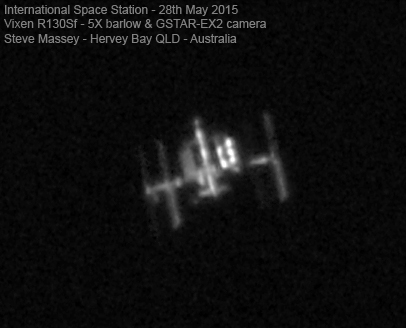

You can see from the image of Saturn and the
galaxy and nebulae images below how well the GSTAR-EX camera performs
both as a planetary imager and deep-sky camera


The above images were taken using the camera
X256 frame accumulation and processed without taking and applying dark
frames in the stacking procedure. The barred spiral galaxy at bottom is
NGC 6872 and is comprised of only 50 frames.
Below: Later in the evening using colour
filters for M20 trifid nebula and M16, the images below were put
together. Dark frames were taken and applied in this instance to ensure
most accurate result.

M20 Trifid Nebula - the GSTAR-EX2 reveals lots more nebulosity

M16 Eagle Nebula - 300 (L) 100 (RGB)
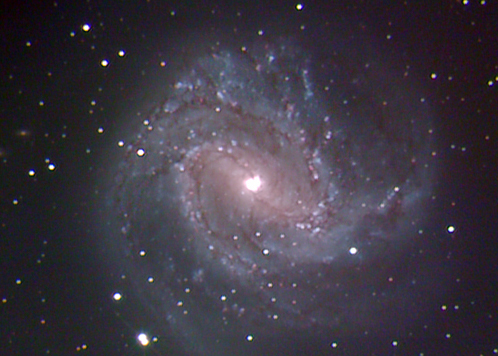
M83 Galaxy - 300 (L) 100 (RGB) >>TOP |
|
THE VIEW AS SEEN ON A COMPUTER MONITOR
LIVE |
|

Above: A screen shot of the GSTAR V.4
capture software and the live view seen using
the GSTAR-EX2 video astronomy camera with luminance filter only. This is
the view seen after 30 seconds ramp up time to reach maximum
sensitivity. Although this view is balanced so as not to over-saturate
the centre of the nebula, adjusting the capture device brightness and
contrast controls will reveal more in the fainter regions.
>>TOP
|
| GSTAR-EX
USER GROUP |
| A camera users support
group has been established with Yahoo as a general resource for camera owners to ask
questions and share ideas and tips etc. It is not a discussion forum as such but rather a
place to log any questions regarding set-up and use of the GSTAR-EX or imaging and image
processing tips. While many owners find the camera quite simple to operate with our online
application user manual covering most questions, if you'd like to share your results,
questions or tips with other camera owners this might be a useful resource for you.
Join the GSTAR-EX Users Group courtesy of
AstroHolic.com
>>TOP
|
|
DOWNLOADS |
|
GSTAR-CAPTURE
Video Capture Software
Included with your camera purchase is our GSTAR Capture software freely
available from this website. It is a flexible video capture program with a diverse
range of features for real-time capture and time delay movie capture. It utilises your installed video or USB capture device drivers allowing
multiple standard capture rates and custom capture rates slower than the
standard 1 frame per second.
Thus, it is perfect for use with the GSTAR-EX2 camera sense up modes
X128 or X256 (GSTAR
Monochrome) or X256 (GSTAR Colour camera). It can even be used with USB
desktop webcams.
GSTAR 4 includes
a favourite object database, location and equipment
database editor. It creates a log database that records not only Universal
Time but all the RA, declination, filter used, telescope, focal length
etc information important for reviewing later when doing your image
processing. The program features single or multiple filter automated
scripted capture and manual modes plus dual positional and guiding crosshair reticles.
The program also includes image enhancement
functions, AVI frame selection for post processing, interlaced and
non-interlaced viewing and recording, unlimited time lapse animation capture, instant snapshot, live histogram, occultation
time stamping, dual night view modes, on screen zoom for checking focus
plus GSTAR-COM and COM2 for GSTAR-EX2 camera control with expanded help file among numerous other
very useful
tools. For anyone using image streaming cameras, GSTAR 4 is a complete
capture tool for astronomy.
Update: The program now
includes an CSD (capture, stack & display) enhancement function which
samples and combines two unique consecutive images to significantly
reduce background noise. This makes live views and images recorded to
the AVI smoother and more pleasing to the eye.
GSTAR Capture V4 is
compatible for use with Windows XP, Vista, WIN7 32 and 64 bit, WIN 8.1and
WIN 10 beta operating
systems as far as we know to date. However, please remember that this is
a "labour of love" freeware program written by Chris Wakeman and Steve
Massey and GSTAR-EX cameras (or any other type for that matter) are not
dependent on using it. In other words, GSTAR4 freeware only looks for
any successfully installed video capture hardware and drivers you have
installed on your computer. We'd like to thank all those who gave us feedback and new
suggestions to help make GSTAR 4 an even more useful tool for Video
Astronomers.
DOWNLOAD CURRENT VERSION
>>TOP
Download
Video Capture Device Analyser
GSTAR Capture V4 is
compatible for use with Windows operating systems however not all video
grabber devices are. Our simple test application will help to determine
any possible incompatibilities with your video capture device. Please
read the text file carefully in order for this program to work. Thanks
Chris Wakeman for developing this useful tool.
**Please Note: If you do not understand
the basics of your telescope or telescope optics and / or attaching
devices to a TV or computer then this product may not be suitable for
you.**
Digitech USB Video Capture Device Driver
for WIN 8.1 platform users
If you have bought a Digitech XC4991 video grabber
device and need the driver for Windows 8.1 operating system then here is
the link.
Run the EXE installation file then reboot your PC. Also appears to work
with WIN 10
Download
|
Copyright 2007-2022 Steve Massey
Home
All Rights Reserved.
|
|
|
RECOMMENDED
READING |
|
Deep
Sky Video Astronomy

Get the book!
Reveals
all the tips and tricks for getting the most out of your deep sky
capable video camera.
GET IT NOW

The GSTAR-EX cameras were used for more than 85% of the image illustrations
in the renowned Atlas of the Southern Night Sky first, second and third
edition sold throughout Australia, New Zealand and
South Africa.
VIDEO ASTRONOMY

Video Astronomy
(revised edition)
oldie but a goodie

ProStar dichroic LRGBC
1.25-inch filter set. Excellent parfocal filters for optimal
colour reproduction with your GSTAR camera.
GET IT NOW

GSTAR 4 Capture snapshot function used to
take this live screen image of nebula M27 with 12-inch Newtonian &
GSTAR-EX2. |
|
Uranus and moons |
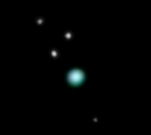 |
|
Saturn |
|

RGB image of Saturn
|
|
Comets |

Comet NEAT 2001 Q4 |
|
Horse Head Neb |

from Sydney light
polluted sky with
10-inch f/5 Newtonian
|
|

